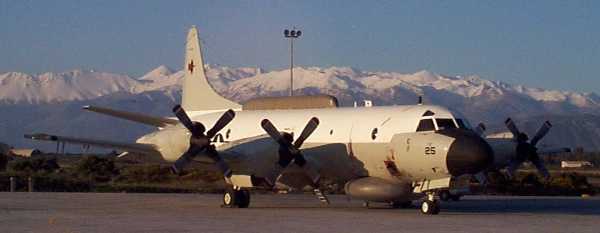

EP-3E Airborne Reconnaissance Integrated Electronics Suite (ARIES) II Sensor System Improvement Program (SSIP) Aircraft
EXECUTIVE SUMMARY
The EP-3E Airborne Reconnaissance Integrated Electronics Suite II (ARIES II) Sensor System Improvement Program (SSIP) Aircraft is a shore-based, long range, fixed wing aircraft that provides near real-time electronic reconnaissance support to Tactical Commanders through detection and identification of tactically significant electronic signals. Aircraft are operated by Fleet Air Reconnaissance Squadron VQ-1 at Naval Air Station (NAS) Whidbey Island, Washington, and VQ-2 at Naval Station (NS) Rota, Spain. A multi-disciplinary aircrew of 24 highly skilled officer and enlisted personnel provide full mission capability for the reconnaissance platform. The EP-3E ARIES II has achieved Initial Operating Capability. Twelve P-3C non-update aircraft were converted to ARIES II SSIP configuration under a Conversion-in-Lieu-of-Procurement Program. The EP-3E ARIES II SSIP is in Phase C (Production and Deployment, and Operations and Support) of the Weapon System Acquisition Process.
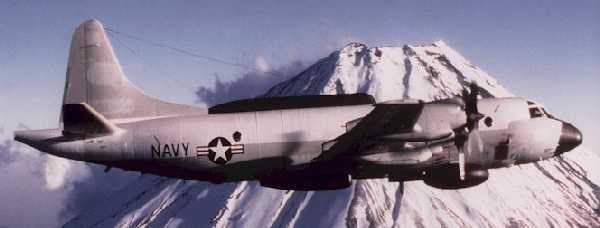
The
maintenance concept for the EP-3E ARIES II consists of organizational,
intermediate, and depot level maintenance. EP-3E ARIES II SSIP Avionics
Plans do not include the intermediate level of maintenance. Fault isolation
and correction times are reduced through the effective, but limited use
of system Built-In Test features at the organizational level. Intermediate
level maintenance fault isolation times are reduced by using Automatic
Test Equipment whenever possible. Depot level maintenance is provided by
the Fleet Support Team, Naval Aviation Depot
Jacksonville,
Florida. Interim support during the SSIP modification is required and detailed
in the Interim Supply Support Plan. Interim support is provided by Raytheon
Technical Services Corporation Indianapolis, Indiana.
The EP-3E has unique operator and maintenance manpower requirements. The Naval Security Group (NAVSECGRU) provides direct support operators, as required, through area Cryptologic Shore Support Activities. The operation and maintenance of the Ground Support Station (GSS) II is provided by the Information Systems Technician (IT) rating. A Fleet Introduction Team is assigned to Naval Air Warfare Center Aircraft Division, Patuxent River, Detachment Indianapolis.
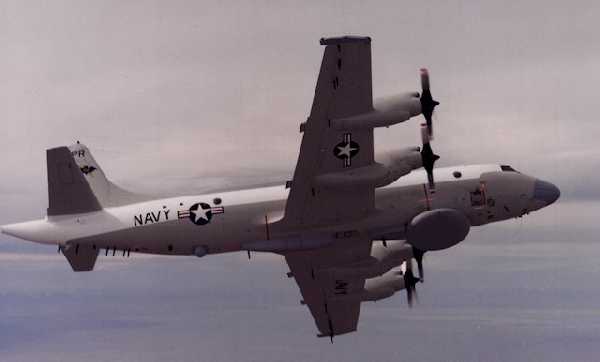
All
initial training for the EP-3E ARIES II SSIP has been completed. Follow-on
training for EP-3E Flight Engineers and Pilots is provided by Patrol Squadron
Thirty. EP-3E/P-3C common maintenance training is provided by Maintenance
Training Unit (MTU) 1011 Naval Air Maintenance Training Unit (NAMTRAU)
Jacksonville, Florida, and MTU 1012 NAMTRAU Whidbey Island, Washington.
Naval Flight Officers receive Inter-Service Navigation training at Randolph
Air Force Base, Texas. Basic and Advanced Electronic Warfare Officer training
and EP-3E ARIES II specific aircraft operator training are held at Fleet
Aviation Specialized
Operational
Training Group Detachment (FASOTRAGRU DET) Whidbey Island, Washington.
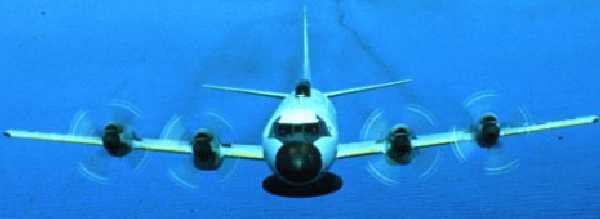
Enlisted aircrew personnel receive Basic Electronic Warfare and EP-3E specific aircraft operator training at FASOTRAGRU DET Whidbey Island. Organizational level maintenance and intermediate level Mission Avionics Systems maintenance training is provided by MTU 1012 NAMTRAU Whidbey Island. NAVSECGRU Communications Evaluators and Special Operators are receiving EP-3E specific aircraft operator training at FASOTRAGRU DET Whidbey Island.
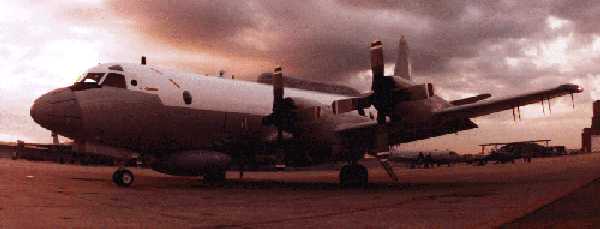
SYSTEM DESCRIPTION
1. Operational Uses. The EP-3E ARIES II aircraft provides Battle Group Commanders the capability to detect and exploit tactically significant electronic signals and communicationSignal Intelligence (SIGINT) information by providing electronic reconnaissance capability for Battle Group indications and warnings, targeting, suppression of enemy air defenses, and strike sorties. The primary mission of the EP-3E ARIES II is to rapidly assess the tactical situation using a variety of onboard sensors and remote data links, manage this multiple-source data, perform contact processing and events analysis, and disseminate evaluated tactical data to the appropriate Fleet Commanders and in-theater decision makers.
The SSIP subsystems are an upgrade package for the ARIES II avionics suite. While not intended to counter any specific threat, they increase mission capability by enabling the EP-3E to cope with the complex threat signal environment in which it operates, as projected in System Threat Assessment, Naval Technical Intelligence Center TA #014-94, August 1988.
The SSIP enhances communications inter-operability and implements Department of Defense guidance to upgrade the EP-3E ARIES II communications systems and selected mission avionics. The Defense Airborne Reconnaissance Office (DARO) and Chief of Naval Operations (CNO) Ltr 3500 Ser N880C6/5S663336 of 8 November 1995 reviewed and validated the requirements for these upgrades.
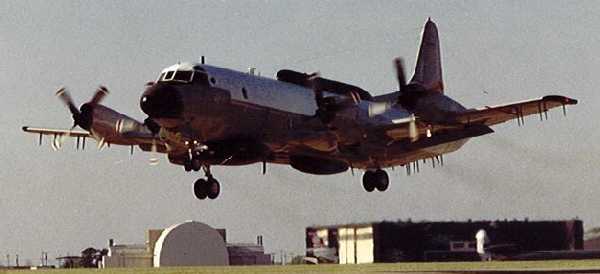
2. Foreign Military Sales. Neither the EP-3E ARIES II nor the EP-3E ARIES II SSIP aircraft will be procured by foreign militaries or any other sources or services.
E. DEVELOPMENTAL TEST AND OPERATIONAL TEST. The EP-3E ARIES II SSIP Test and Evaluation Master Plan (TEMP) outlines the requirements for Developmental Test (DT), which was completed December 1999 with ten major discrepancies, and Operational Test and Evaluation (OT&E), which was originally conducted in July, 2000 with the OT&E report released with some discrepancies. The EP-3E ARIES II SSIP is still currently in OT&E undergoing a Verification of Correction of Discrepancies that is scheduled for completion during FY01. A Program Executive Office program review will be held following completion of the Operational Assessment (OA) to evaluate system performance and supportability. The Integrated Test Facility (ITF) and the aircraft test and evaluation schedule are described in the Integrated Test Plan and the TEMP. OT&E personnel observed the DT conducted in the ITF.
NAWCAD Patuxent River, Maryland, conducted, managed, coordinated, and completed all test and evaluation efforts for the EP-3E ARIES II Aircraft. The completed EP-3E ARIES II SSIP DT and OT&E included the ITF Testing, Aircraft Non-Reoccurring Engineer, Trial Kit installation, DT-IIIA/OA, and DT-IIIB.
F. AIRCRAFT AND/OR EQUIPMENT/SYSTEM/SUBSYSTEM REPLACED. The EP-3E ARIES II Aircraft replaced the EP-3B BATRACK and the EP-3E ARIES DEEPWELL Aircraft.
The EP-3E ARIES II is being upgraded through the EP-3E ARIES II SSIP by the installation of the Story Teller, Story Book, and Story Classic subsystems, and modification of the AN/ULQ-16 system.
G. DESCRIPTION OF NEW DEVELOPMENT
1. Functional Description. The EP-3E ARIES II is a shore-based, long range, fixed wing aircraft powered by four T-56-A-14 turboprop engines. The EP-3E uses a complex combination of receivers, antennas, computers, displays, and recording devices to accomplish its primary mission of Electronic Support (ES). The aircraft provides near real-time SIGINT capabilities to Battle Group and Joint Commanders. The avionics package of the EP-3E is designated the Mission Avionics System (MAS). The MAS provides mission support through detection and analysis of significant ES signals. Complete functional details of the various subsystems are classified beyond the level of this document.
a. Airframe. The fuselage is pressurized in the cabin area. Personnel loading and unloading is accomplished through use of an electromechanically operated folding ladder, which is stored in the cabin when not in use. There are four cabin emergency escape hatches. Two over-wing hatches (port and starboard) are located on the sides of the fuselage, one hatch aft of the pilot’s port side windshield panel, and one hatch overhead in the top of the flight station. The lavatory and galley are located in the aft cabin fuselage. The largest radome on the aircraft is 12 feet in diameter, 3 feet deep, elliptical, and retractable. It houses the Big Look antenna and is located just aft of the nose gear. The upper and lower canoe assemblies house additional antennas. The upper canoe consists of three sections located on top of the fuselage, forward of and in-line with the vertical stabilizer. The lower canoe, also in three sections, is located on the lower fuselage center, just aft of the Big Look antenna.
b. Flight Controls, Hydraulic Systems, and Service Center. There are two independent (primary and secondary) hydraulic power systems located in the Hydraulic Service Center (HSC) that operate at 3,000 pounds per square inch of pressure. The HSC is accessible from outside the aircraft through a door in the bottom of the fuselage and from the cabin through the deck hatch. In addition to the number one and two hydraulic power systems, the normal brake valve, accumulator, emergency brake modulator valves, air brake bottle, in-flight brake pressure reducer, aileron boost package, wing flaps, and landing gear components are located in the HSC. The system is identical to the original P-3C hydraulic system, except for the EP-3E ARIES II modification that deleted bomb bay doors and installed the retractable radome.
c. Landing Gear. The landing gear system is comprised of two main gears and one nose gear. Each assembly consists of dual wheels and forward-retracting struts. The gears are designed to free fall and lock in the down position in the event hydraulic pressure is lost.
d.
Turboshaft Engines and Power Unit Section Assembly. The EP-3E ARIES II
is powered by four Allison T-56-A-14 Turboprop Engines. Each engine develops
4,600 Shaft
Horsepower
(SHP) at 1,077 degrees Celsius Turbine Inlet Temperature.
e. Auxiliary Power Unit. The Auxiliary Power Unit (APU) consists of a Gas Turbine Compressor (GTC) driving a 60 Kilovolt-Ampere (KVA) generator identical to the other engine-driven generators. The GTC has a two-stage centrifugal compressor and a single-stage inward flow radial turbine. Bleed air is used for engine starting, ground air conditioning, and heating. The APU can be operated in flight for generating emergency electrical power; however, bleed air is not available.
f. Aircraft Propellers, Spinners, and Anti-icing. Four Hamilton-Standard 54H60-77 four-bladed aircraft propellers convert SHP into thrust. Propeller modes-of-operation are flight range (including take-off roll (after power levers are moved forward)), all flight regimes, and ground operating range ("Beta" (where power levers are aft of the flight-idle stop.)) Propeller spinners, blade cuffs, and islands are heated to control ice build-up. When the system is engaged, the spinner nose is heated continuously. A hydraulic, speed-sensitive pitchlock is included in the propeller control assembly to prevent overspeed.
g. Air Conditioning, Pressurization, Ice Control, Number Two and Three Cabin Pressure. During ground and flight operations, environmental control for the aircrew and electronic equipment is provided by the air conditioning and pressurization system. The system employs engine bleed air and electrical power to achieve anti-icing (prevention) and de-icing (removal).
h. Electric Power Supply, Alternating Current and Direct Current. The aircraft electrical Alternating Current (AC) power is supplied by three 60 KVA generators mounted on, and driven by engines number two, three, and four. In normal operation, generators two and three work independently, each providing power to one of two main AC buses, A or B.
Generator four serves as a standby, supplying power in the event of a malfunction with generators two or three. Generator switching is completely automatic and is indicated by advisory lights in the flight station. The APU is a fourth generator that may be used in flight, if necessary, as well as on the ground. Direct Current (DC) power is provided by three 200 ampere transformer rectifiers which convert AC to DC, supplying power to the DC buses.
i. Fuel System. The fuel system includes five tanks, a fueling system, and transfer, cross-feed, and dump systems. The fuel system allows conventional over the wing fueling, or pressure fueling and defueling under the wing. There are four wing tanks and an auxiliary tank, identified as tank five. Tank five is a bladder type tank, located in the unpressurized area of the lower fuselage. The fueling system provides the capability to pressure fuel any tank to any desired quantity if electrical power is available. Tank five can be fueled only through the pressure fueling system.
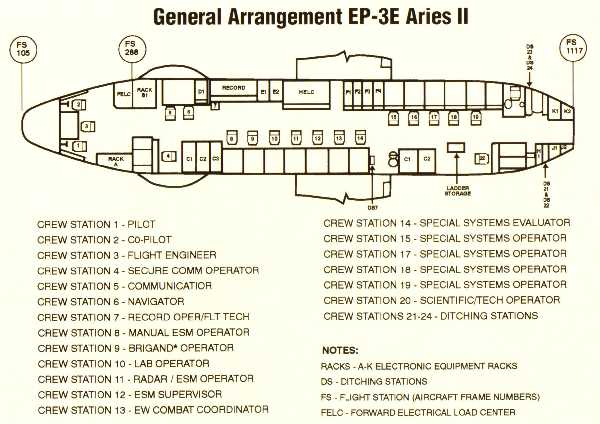
j. EP-3E ARIES II Mission Equipment. The primary EP-3E ARIES II MAS equipment is listed as follows:

STATION 8-13 SUBSYSTEMS
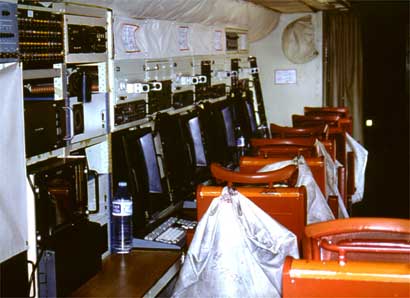
STATION 14-19 SUBSYSTEMS
COMMON EP-3E ARIES II AIRCRAFT SUBSYSTEMS
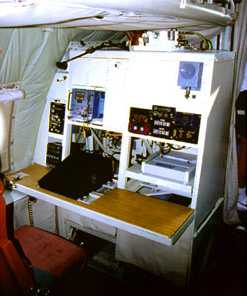
Position
4
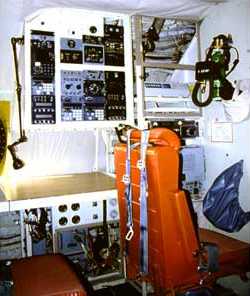
Position
6
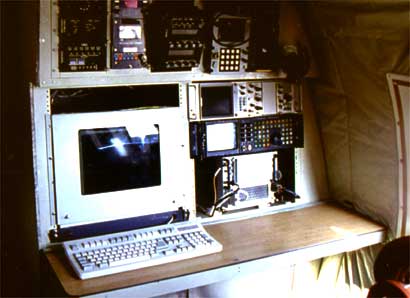
Position
20
k. Ground Support Station II. The Ground Support Station (GSS) II provides mission preparation, support, analysis, and reporting for the EP-3E MAS.
(1)
Mission Preparation. Preparation elements of the GSS II allow
display,
editing, configuration of pre-mission databases, and mission software loads.
(2)
Mission Support. Support elements of the GSS II allow the import and export
of mission data bases, operational flight planning, and mission collection.
(3)
Mission Elements. Elements of the GSS II allow the creation, editing, display,
and processing of mission data.
(4)
GSS II Configuration. The configuration of the GSS II listed below is a
prototype to be delivered. The GSS II configuration includes:
l.
EP-3E ARIES II Sensor System Improvement Program. The EP-3E AIRES II SSIP
consists of four mission subsystems, including Story Teller, Story Book,
Story Classic, and a modified AN/ULQ-16. These subsystems are connected
to each other on an Ethernet Local
Area
Network (LAN), which interfaces with the existing EP-3E ARIES II Electronic
Support Measures (ESM) MAS through a systems interface processor.
(1) Story Teller. Story Teller provides the capability to manipulate selected organic and non-organic data and view a composite tactical situation display, correlate multiple onboard sensor inputs with selected external data link inputs, and communicate value added information via selected data links and communication networks. Story Teller is installed at positions 12, 13, and 14, and enables the following data and voice networks:
·
Tactical Receive Equipment and Related Applications
·
Tactical Digital Information Exchange System - B
·
Tactical Digital Information Link - A (TADIL-A)
·
Tactical Information Broadcast Service (TIBS)
·
Tactical Reconnaissance Information Exchange Services
·
Advisory Support Network
·
Intelligence Network
Story
Teller consists of the following major hardware units: three
ruggedized
TAC-3 work stations with three ruggedized high resolution color monitors,
a Sensitive Compartmented Information Systems Interface, an EPR-165 TADIL-A
Processor, a Commander’s Tactical Terminal/Hybrid Receiver, a TIBS Data
Link Interface, an Advanced Narrow-band Digital Voice Terminal, and three
RT-1273AG Satellite Communication-capable radios. Story Teller is networked
on the common SSIP Ethernet LAN and on its own Story Teller Ethernet LAN.
It interfaces with the operator through the Story Teller Man-to-Machine
Interface (MMI) software.
(2)
Story Book. Story Book is an integrated special signal acquisition, data
processing, and data fusion system that provides situation awareness based
on special signals exploitation. Story Book provides the capability to
assess the tactical picture and expeditiously add SIGINT data to communications
data links. Story Book consists of a ruggedized TAC-3 work station with
a ruggedized high resolution color monitor networked on the common SSIP
Ethernet
LAN and Story Book Ethernet LAN, the Fusion Engine (Windjammer) software
and processing system hosted in a Versa Modular Eurocard (VME) chassis,
Mission Processor Software, and the EPR-208 Signal Processor and Common
Database Server system with Watkins Johnson (WJ) 8604 Signal Collection
receivers. Story Book includes software and hardware interfaces to the
aircraft Global Positioning System (GPS) and Inertial Navigation System
(INS).
Story
Book is installed at position 9.
(3)
Story Classic. The Story Classic system provides Special Operators at positions
15 through 20 with an upgraded search and acquisition system for low band
signals. Story Classic consists of three ruggedized TAC-3 work stations,
two x-terminal work stations,
five
ruggedized high resolution color monitors, and a flat-panel Liquid Crystal
Display portable workstation. These workstations are networked on the common
SSIP Ethernet LAN and Story Classic Ethernet LAN. Story Classic includes
a signal acquisition, distribution, and exploitation system which incorporates
general search and directed search capabilities through a pool of 24
WJ
8607 receivers, a set of SP-202 Spectrum Processors, matrix switches, and
demodulators.
Other Story Classic hardware includes a WJ-8700 Dual High Frequency (HF) receiver, DI-930 digital recorders, and a VME chassis, which hosts the Data Server, the Navigation Data Interface, and the Pool Manager. The operator’s MMI software is similar to that of Story Teller.
(4)
AN/ULQ-16. The AN/ULQ-16 Signal Data Processor at positions 8,
10,
11, 12, and 20 has been modified to upgrade electromagnetic pulse processing
capabilities.
The
modification replaces the IP-1159 and the FR-185 (XAN-3) Electrical Pulse
Analyzer and adds dual channel real-time video inputs. The modification
involves new circuitry in the Signal
Data
Processor (CP-1499 Mod), the addition of a nine-inch high resolution display
(EI-1700), an EI-1400 Control Display Unit, and processor software upgrades.
(5)
EP-3E ARIES II Sensor System Improvement Program System
Maintenance
Diagnostics. The EP-3E ARIES II SSIP System Maintenance Diagnostics (SMD)
are derived from an upgraded version of the ARIES II Software Maintenance
Program (SMP).
The
EP-3E ARIES II SSIP SMD includes operator station status and functional
checks embedded in the MMI software for preflight, in-flight, and post-flight
checks; a stand-alone SMP for
organizational
maintenance on selected SSIP equipment; and individual equipment tests
for troubleshooting the remaining SSIP equipment. The SMD maximizes re-use
of existing EP-3E ARIES II equipment diagnostic software and integrates
it into the SSIP subsystem software.
2. Physical Description. The EP-3E ARIES II is a modified P-3C Non-Update (NUD) Aircraft. External upper and lower canoes are added to house antenna installations. The bottom forward cargo bay has been modified to accept the AN/APX-134 Radar Antenna and radome.
The
following dimensions reflect EP-3E ARIES II and EP-3E ARIES II SSIP Aircraft.
| Wing Span | 99 feet 8.0 inches |
| Length | 116 feet 10.0 inches |
| Height | 33 feet 8.5 inches |
| Max. Gross Weight | 142,000 pounds |
3.
New Development Introduction. The EP-3E ARIES II program modified 12 low
time P-3C ORION NUD Aircraft.
| 152719 | EP-3J | TUCSON AZ | NASC FS | NASC FSO, MASDC |
| 156507 | EP-3E | NAS WHIDBEY ISLAND | PAC NAVY | VQ-1 |
| 156514 | EP-3E | NAS WHIDBEY ISLAND | PAC NAVY | VQ-1 |
| 156528 | EP-3E | NAS WHIDBEY ISLAND | PAC NAVY | VQ-1 |
| 157318 | EP-3E | NAS WHIDBEY ISLAND | PAC NAVY | VQ-1 |
| 156511 | EP-3E | NAF DIEGO GARCIA | PAC NAVY | VQ-1 DET MISAWA |
| 156517 | EP-3E | NAF MISAWA JA | PAC NAVY | VQ-1 DET MISAWA |
| 156519 | EP-3E | NS ROTA SP | LANT NAVY | VQ-2 |
| 156529 | EP-3E | NAS PATUXENT RIVER | LANT NAVY | VQ-2 |
| 157316 | EP-3E | NS ROTA SP | LANT NAVY | VQ-2 |
| 157325 | EP-3E | NS ROTA SP | LANT NAVY | VQ-2 |
| 157326 | EP-3E | NAS JACKSONVILLE | LANT NAVY | VQ-2 |
Five (5) aircraft were modified by the Lockheed Aircraft Service Company at the Lockheed Aeromod Center, Incorporated, facility in Greenville, South Carolina.
Four (4) aircraft were modified by Naval Aviation Depot (NADEP) Alameda, California, and three (3) were modified at NADEP Jacksonville, Florida. The EP-3E ARIES II MAS was installed on 12 aircraft and the ITF. SSIP will be installed in 12 EP-3E ARIES II Aircraft.
4. Significant Interfaces. There are a significant number of shared systems and MAS equipment between the EP-3E ARIES II and the ES-3A Aircraft. The EP-3E ARIES II interfaces with other Battle Group defense platforms including United States Air Force Airborne Warning and Control Aircraft, Airborne Command and Control Forces, and sub-surface forces.
EP-3E ARIES II SSIP subsystems directly interface with EP-3E ARIES II systems, such as the AN/ALD-9, GPS, INS, Digital Communications Management System (DCMS), and ESM.
Story Teller interfaces with the EP-3E ARIES II OL-390 communications processor, the AN/ARC-187 Ultra High Frequency (UHF) radio suite, and the DCMS. Story Classic interfaces with the EP-3E ARIES II AN/ALD-9 Direction Finder Processing System, the AN/URR-78 HF Receivers, and the DCMS. Impact on Specific Operator is detailed in paragraph I.2 below.
5. New Features, Configurations, or Material. Modifications to the EP-3E ARIES II Aircraft began in March 1996. The Joint SIGINT Architecture Family is undergoing prototype development and will be installed on one EP-3E ARIES II SSIP Aircraft for test and evaluation.
H. CONCEPTS
1.
Operational Concept. The EP-3E ARIES II is operated by a crew of 24 personnel
including eight officers and 16 enlisted aircrew. The officers include
Pilots, Naval Flight Officers (NFOs), and a Naval Aviation Officer. The
enlisted aircrew includes Electronic Warfare Operators, Laboratory Operators,
a Secure Communications Operator, Special Station Operators, In-Flight
Technicians (IFTs), and Flight Engineers. The EP-3E ARIES II provides tactical
surveillance, reconnaissance, strike support, fleet support and warning,
and monitoring of electromagnetic signals of interest for intelligence
analysis. The EP-3E ARIES II operational concept is consistent with the
mission tasking outlined in the VQ (EP-3E) Required Operational
Capabilities
(ROC) and Projected Operational Environment (POE). The EP-3E ARIES II SSIP
operational concept remains unchanged from the basic EP-3E ARIES II.
2. Maintenance Concept. The EP-3E ARIES II maintenance concept reflects the three-level (organizational, intermediate, and depot) plan promulgated in the Naval Aviation Maintenance Program (NAMP), Office of the Chief of Naval Operations Instruction (OPNAVINST) 4790.2 series. Time expended for fault isolation and corrective maintenance actions is reduced through effective use of the limited Built-In Test system features at the organizational level. Intermediate level fault isolation time is similarly reduced by using Automatic Test Equipment whenever possible.
Organizational
and intermediate level maintenance is accomplished by Navy organic support.
Depot level maintenance requires both organic and contractor support for
those subsystems not supported by Navy organic facilities. The EP-3E ARIES
II SSIP Avionics Plans span from organizational to depot level with no
intermediate level
repair.
The Navy organizational level maintenance effort is limited to the removal
and replacement of Weapon Replaceable Assemblies (WRA). Depot level repair
is accomplished by existing organic depots and cognizant vendors.
a. Organizational. EP-3E ARIES II and EP-3E ARIES II SSIP organizational level maintenance actions are performed by the operating units on a day-to-day basis in support of their own operations. These actions include inspections, servicing, handling, and on-equipment corrective maintenance procedures including removal and replacement of WRAs, selective Shop Replaceable Assemblies (SRA), and major aircraft and engine components.
(1) Preventive Maintenance. Preventive maintenance consists of standard preflight, postflight, calendar, and flight hour material and corrosion inspections done in accordance with prescribed Maintenance Requirements Cards.
(2) Corrective Maintenance. EP-3E ARIES II organizational level maintenance consists of removal and replacement of faulty aircraft and engine components, WRAs, and selected SRAs, retest to confirm proper system operation, and on-equipment repair. The SMD is used for fault isolation to the WRA for EP-3E ARIES II SSIP equipment. The AN/USM-482 is used to isolate failures in the RF waveguide transmission lines. Repair, including proper documentation and tool accountability, consists of fault isolation, removal and replacement of faulty WRAs and selected SRAs, and retest to confirm proper system operation.
b. Intermediate. Intermediate maintenance consists of repair of aircraft and engine components, WRAs, and SRAs forwarded to the Aircraft Intermediate Maintenance Department (AIMD) by the organizational activities. WRA repair is accomplished by replacement of faulty SRAs, pieces, and parts. The troubleshooting and repair of faulty components, WRAs, and SRAs by intermediate maintenance personnel is performed in accordance with the specific equipment maintenance plans. EP-3E ARIES II SSIP Avionics Plans do not include intermediate level maintenance.
c. Depot. Repair of all components, WRAs, and SRAs determined to be beyond the maintenance capability of the squadron or supporting AIMD is accomplished or directed by the Fleet Support Team (FST), NADEP Jacksonville. Piece and part replacements are performed in accordance with approved maintenance plans. Various contractors, including Raytheon Technical Service Company (RTSC) Indianapolis, Indiana, (formerly NAWCAD Indianapolis) provide depot level support for the Electronic Warfare (EW) mission avionics. EP-3E ARIES II SSIP is planned for life-cycle vendor support for selected EP-3E unique equipment. EP-3E ARIES II SSIP equipment common to other service applications will share a common depot per the lead-service procedures. NADEP Jacksonville is the FST for the basic EP-3E and the depot for airframe, hydraulics, environmental systems, and P-3C common equipment.
d.
Interim Maintenance. Interim support for new or modified contractor furnished
avionics equipment is provided by RTSC Indianapolis and various other contractors
until Navy organic support is fully developed. Nine Naval Aviation Technical
Data and Engineering Service Command (NATEC) representatives provide Navy
Engineering and Technical Services to support the EP-3E ARIES II MAS and
the ARIES II Aircraft program. The Interim Supply Support (ISS) Plan details
interim support required for new or modified
avionics
equipment. Repair or Return (ROR) contracts are used as interim maintenance
support and are managed by various Navy Inventory Control Points (NAVICP).
The ISS Plan was developed to establish organizational responsibilities
and functions for the development and acquisition of support resources
for the EP-3E ARIES II SSIP until the Material Support Date (MSD), which
was achieved in January 1999. NAVICP manages the ROR program using data
input from the three fleet and equipment repair activities. RTSC Indianapolis
assists NAVICP in the management of the ROR program.
e. Life-Cycle Maintenance Plan. The EP-3E Conversion-In-Lieu of Procurement program authorized the conversion of 12 P-3C NUD Aircraft into EP-3E ARIES II Aircraft, extending service life into the early part of the 21 st century. Aircraft with a fatigue life index of greater than 100 percent have no Aircraft Service Period Adjustment. Standard Depot Level Maintenance (SDLM) will be required within 20 months of the last mid-term inspection or within 40 months of SDLM, whichever is earlier.
3. Manning Concept. Qualitative and quantitative manpower requirements for the EP-3E ARIES II are driven by the user activity’s ROC and POE and preventive and corrective maintenance requirements. The number of positions requiring manning is dictated by a planned maintenance flying day of twenty-four hours per day, seven days per week. There has been no significant change to the EP-3E Maintenance Man-Hour per Flight Hour since the last NTSP update.
The EP-3E ARIES II has unique manpower requirements. Aviation Electronics Technician (AT) enlisted aircrew members in the EP-3E ARIES II community serve dual roles, as both Operators and Maintenance Technicians. The Naval Security Group (NAVSECGRU) provides direct support operators, as required, through area Cryptologic Shore Support Activities. The operation and maintenance of the GSS II is provided by the Information Systems Technician (IT) rating.
The EP-3E ARIES II SSIP is operated by a crew of 24 including eight officers and 16 enlisted aircrew personnel. This requirement remains unchanged from the basic EP-3E ARIES II.
The following operator positions are directly affected by the EP-3E ARIES II SSIP:
Positions 8, 10, and 11 remain ESM Manual Search Positions.
Position 9 becomes the Story Book Operator.
Naval Aviation Officer, position 14, will no longer be “I” branch capable and becomes a Story Teller Operator.
Scientific and Technology Operator, position 20, becomes “I” branch capable.
NFO positions 12 and 13 become Story Teller Operators.
4. Training Concept. Pilot and aircrew training for the EP-3E ARIES II is provided by Patrol Squadron Thirty (VP-30), NAS Jacksonville, Florida. Peculiar EP-3E ARIES II aircrew training has historically been provided by VQ-1 and VQ-2, under cognizance of the Commander, Naval Air Force, Pacific, and Commander, Naval Air Force, Atlantic, following completion of applicable signal recognition curricula at FASOTRAGRU DET, Whidbey Island.
Follow-on training for common EP-3E and P-3C maintenance is provided by Maintenance Training Unit (MTU) 1011, Naval Air Maintenance Training Unit (NAMTRAU) Jacksonville, Florida, and MTU 1012, NAMTRAU Whidbey Island, Washington. The EP-3E SST initiative shifted EP-3E ARIES II specific organizational maintenance training to MTU 1012 in FY97.
Remaining training courses being shifted require new Course Identification Numbers (CINs) and training tracks. New CINs and training track numbers will be included in subsequent updates to this training plan.
The
established training concept for most aviation maintenance training divides
“A” School courses into two or more segments called Core and Strand. Many
organizational level “C” School courses are also divided into separate
Initial and Career training courses. “A” School Core courses include general
knowledge and skills training for the particular rating, while “A” School
Strand courses focus on the more specialized training requirements for
that rating and a specific aircraft or equipment, based on the student’s
fleet activity destination. Strand training
immediately
follows Core training and is part of the “A” School. Upon completion of
Core and Strand “A” Schools, graduates going to organizational level activities
attend the appropriate Initial “C” School for additional specific training.
Initial “C” School training is intended for students in paygrades E-4 and
below. Career “C” School training is provided to organizational level personnel,
E-5 and above, to enhance skills and knowledge within their field. “A”
School graduates going to intermediate level activities attend the appropriate
intermediate level “C” School. Intermediate level “C” Schools are not separated
into Initial and Career courses.
a. Initial Training. Initial training for EP-3E and P-3C common equipment and peculiar EP-3E ARIES II equipment was completed at NAWCAD Patuxent River. Initial training for the EP-3E ARIES II SSIP was completed during first quarter FY96 at NAWCAD Indianapolis.
b. Follow-on Training
(1)
Operator. Follow-on training for common EP-3E and P-3C operators is provided
by VP-30, NAS Jacksonville. The EP-3E SST initiative shifted EP-3E specific
training for aircrew and operators to FASOTRAGRU DET Whidbey Island in
FY97. Training
track
lengths have been adjusted to allow student throughput to be displayed
by individual training locations such as Fairchild Air Force Base (AFB),
Florida, FASOTRAGRU DET Whidbey Island, and MTU 1012. EP-3E ARIES II SSIP
training courses and tracks for operator
and
aircrew are detailed below. Refer to elements IV.A.1 and IV.A.2 for additional
information on Technical Training Equipment (TTE) and Training Devices
(TDs).